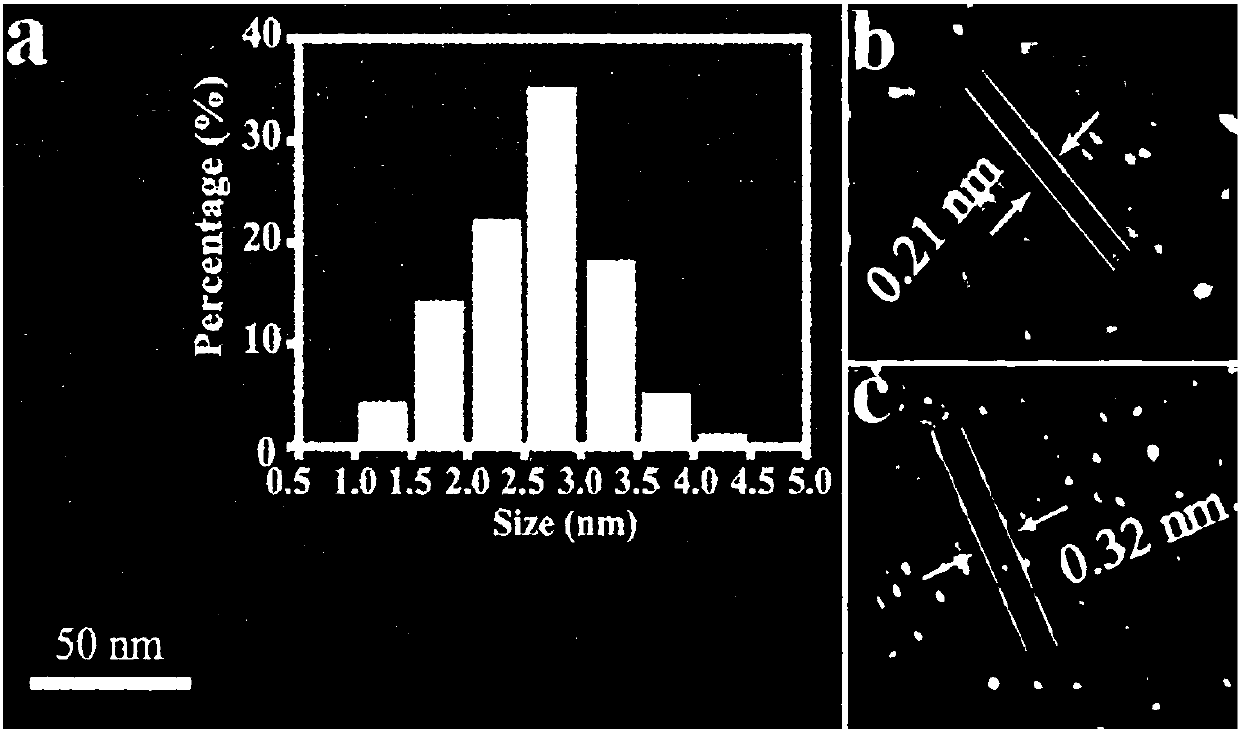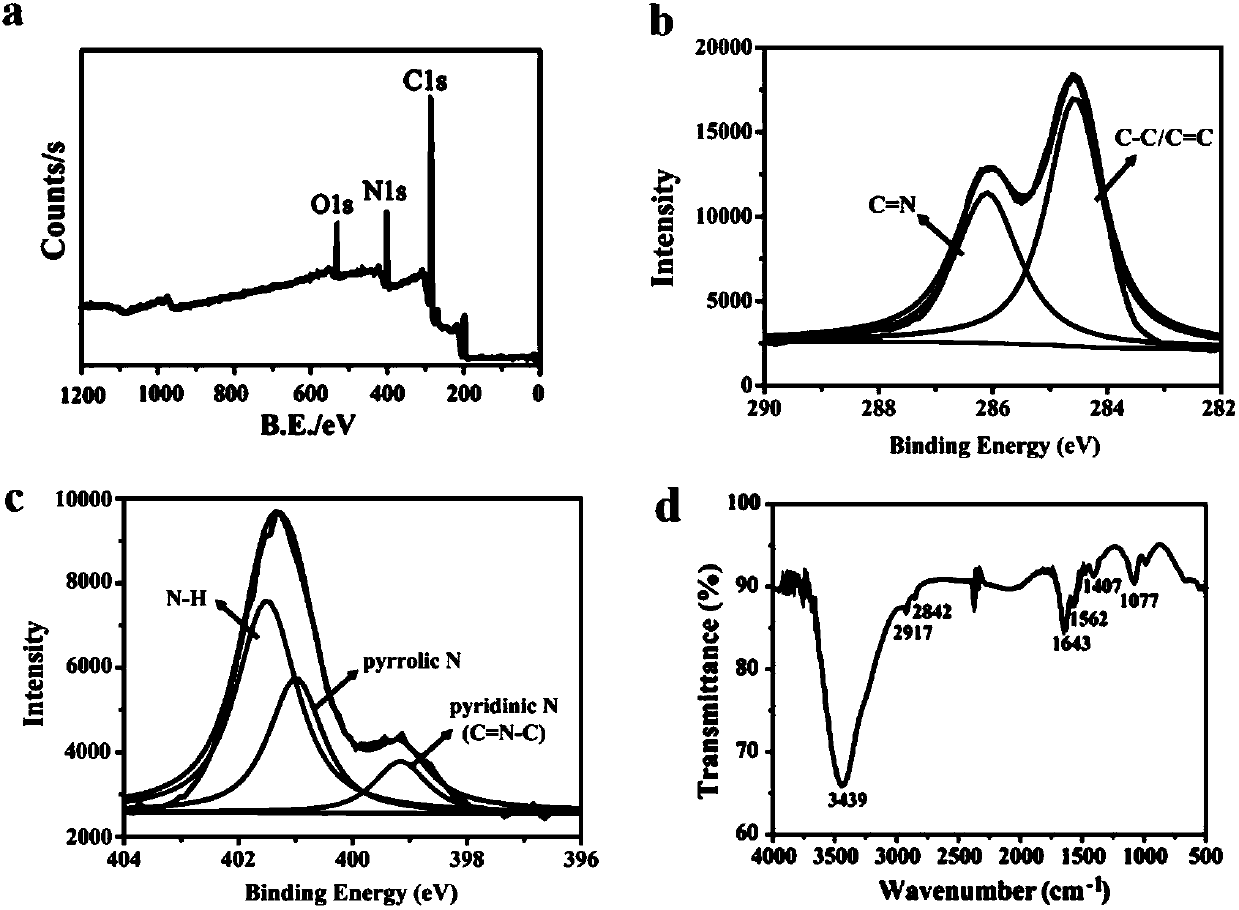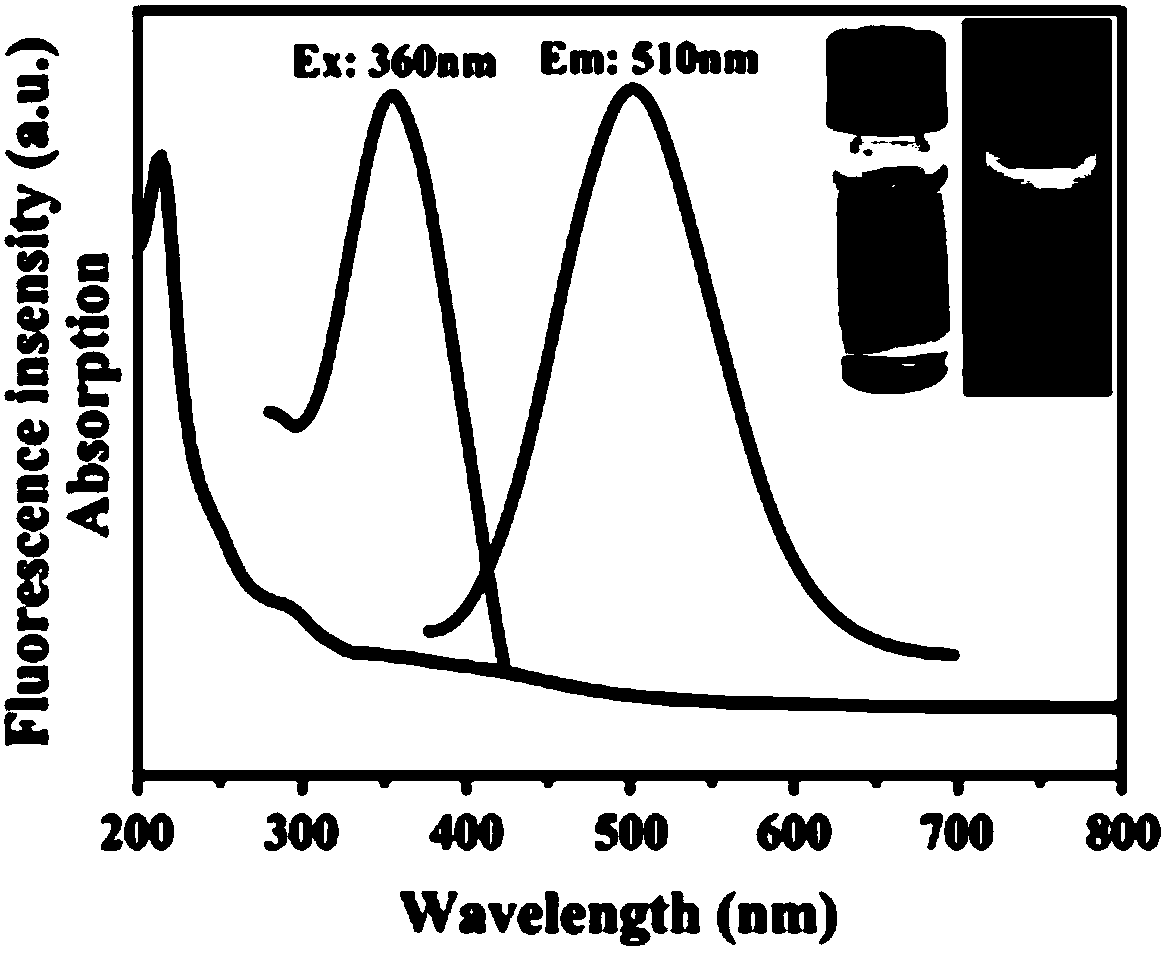Preparation method of fluorescent carbon dot capable of imaging RNA in living cell for long time in targeting manner and product and application of preparation method
A technology of targeted imaging and fluorescent carbon dots, applied in the field of nanomaterials, to achieve the effect of low biological toxicity, good resistance to photobleaching and biocompatibility
- Summary
- Abstract
- Description
- Claims
- Application Information
AI Technical Summary
Problems solved by technology
Method used
Image
Examples
Embodiment 1
[0035] Example 1. Preparation of a green fluorescent carbon dot with strong photobleaching resistance, high biocompatibility, and ability to target and image RNA in living cells for a long time
[0036] A method for preparing green fluorescent carbon dots with strong photobleaching resistance, high biocompatibility, and the ability to target and image RNA in living cells for a long time, comprising the following steps:
[0037] 1) Wash the 25mL tetrafluoroethylene reaction kettle with ultrapure water for use;
[0038] 2) Mix 100mg of m-phenylenediamine, 0.2mL of triethylenetetramine and 4.8mL of ultrapure water into the reaction kettle;
[0039] 3) Place the reaction kettle in an electric heating constant temperature blast drying oven, react at 180°C for 20 hours, and cool to obtain a brownish-yellow liquid;
[0040] 4) neutralize the reaction product with hydrochloric acid solution to pH=7.0;
[0041]5) Filter the neutralized solution with a 0.22 micron filter head, then di...
Embodiment 2
[0046] Example 2. Characterization of the prepared green fluorescent carbon dots with strong photobleaching resistance, high biocompatibility, and ability to target and image RNA in living cells for a long time and their optical properties.
[0047] FTIR-8400S Fourier Transform Infrared Spectrometer (Hitachi, Japan); High Power Transmission Electron Microscope (Tecnai G2F20 S-TWIN microscopy); ESCALAB250 X-ray photoelectron spectrometer; UV Vis Spectrophotometer (Shimadzu, Japan); F-2500 Fluorescence Spectrophotometer (Hitachi, Japan); Absolute PLQuantum yield Spectrum C11347 (HAMAMATSU, Japan); Multi-function microplate reader (BioTek, USA).
[0048] (1) Morphological characterization: take a small amount of prepared carbon dots and dissolve them in water, then drop them on the special copper grid for transmission electron microscope, and observe their morphology with high-power transmission electron microscope after drying. figure 1 shown. It can be seen through a high-magn...
Embodiment 3
[0054] Example 3. Investigation of photostability, cytotoxicity and long-term intracellular RNA targeting imaging ability of prepared carbon dots
[0055] Instruments: F-2500 fluorescence spectrophotometer (Hitachi, Japan); Olympus spinning disk confocal microscopy imaging system (Olympus, Japan); multi-functional microplate reader (BioTek, USA).
[0056] The carbon point that embodiment 1 is made detects, and the result is as follows:
[0057] (1) Photostability investigation: Use F-2500 fluorescence spectrophotometer to measure the fluorescence of carbon dots in different concentrations of sodium chloride solution, hydrogen peroxide solution, BR buffer with different pH gradients and after different UV treatment times Intensity, the result is shown in Figure 4. The results show that the carbon dots prepared by the invention have strong photostability and photobleaching resistance.
[0058] (2) Cell culture: the selected cells are human respiratory epithelial cells (HEp2) i...
PUM
 Login to View More
Login to View More Abstract
Description
Claims
Application Information
 Login to View More
Login to View More - R&D
- Intellectual Property
- Life Sciences
- Materials
- Tech Scout
- Unparalleled Data Quality
- Higher Quality Content
- 60% Fewer Hallucinations
Browse by: Latest US Patents, China's latest patents, Technical Efficacy Thesaurus, Application Domain, Technology Topic, Popular Technical Reports.
© 2025 PatSnap. All rights reserved.Legal|Privacy policy|Modern Slavery Act Transparency Statement|Sitemap|About US| Contact US: help@patsnap.com



